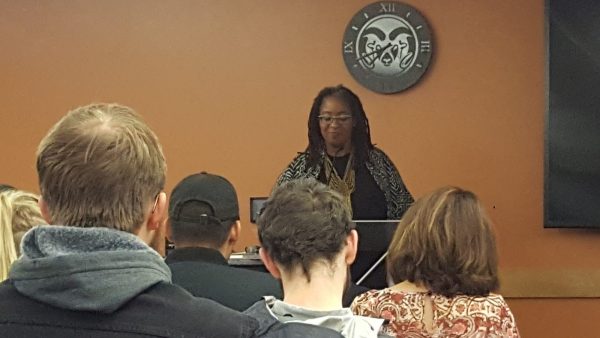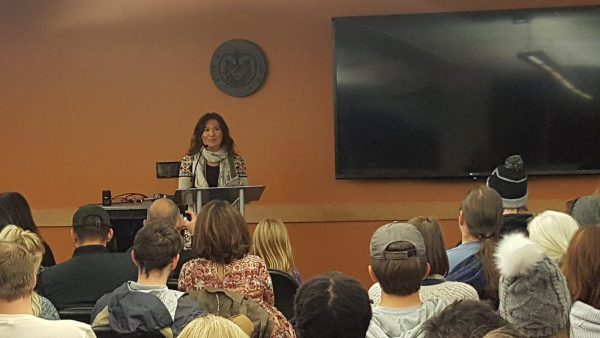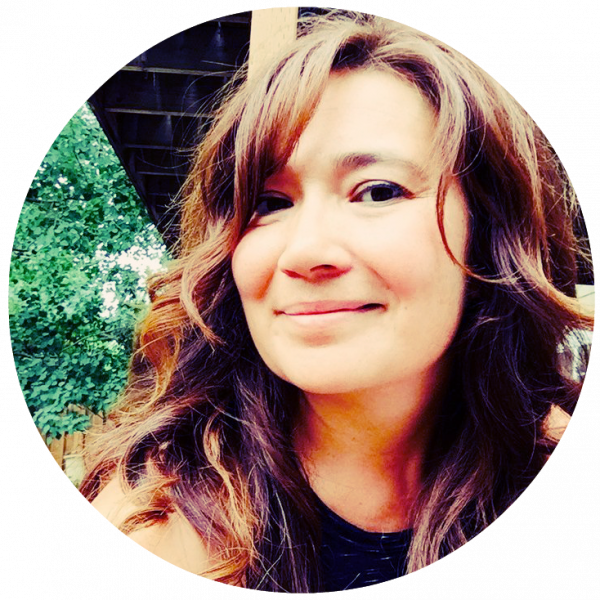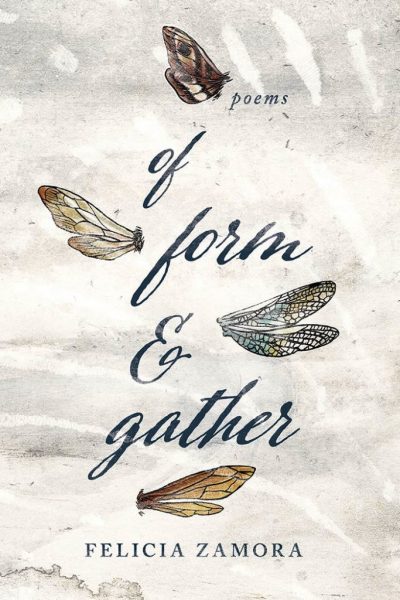Poet and CSU alumna Felicia Zamora returned to campus for a Creative Writing Reading Series reading. The reading series is part of the CLA 2017 Diversity and Inclusion theme. This is an important theme for Zamora and her writing. Just last year, Zamora’s Of Form & Gather was awarded the 2016 Andres Montoya Poetry Prize, created to help support the first publication by a Latino/a poet in the United States. Zamora was also chosen as the 2017 Fort Collins Poet Laureate.

Camille Dungy, CSU professor and Director of the Creative Writing Reading Series, opened the reading and MFA student Christa Shively introduced Zamora. Shively spoke of Zamora’s dedication to craft and the way she writes about both the known and unknown world.
Zamora’s reading took us through a journey of her poetry, and her process towards finding her voice. Since graduating with an M.F.A. from CSU, she challenged herself to write one manuscript each year, a challenge she has accomplished. Just this year, Zamora published two collections of poetry: Of Form & Gather (February) and & in Open, Marvel (October).
Zamora’s biggest piece of advice was to “just write.” Writing does lead to editing, but Zamora also advised to not over edit any piece of work. Eventually, you’ll find yourself writing new poems and new manuscripts instead of tapping into the same mindset that inspired the original draft.
Sometimes, it happens that the first collection you write may not be the first one published. For Zamora, her fourth manuscript was Of Form & Gather, but it was published before her third manuscript, & in Open, Marvel. By this fourth manuscript, Zamora felt that she had found her voice and the direction she wanted her poetry to go.
Zamora read from Of Form & Gather, described by CSU faculty Dan Beachy-Quick as “Charting out circles and cycles and containments, these people also become that complicated mirror that doesn’t simply reflect us back to ourselves, but as all that is not exactly us, where the body goes animal, goes vegetal, ‘& mind becomes becomes becomes.’”
Of Form & Gather observes and speaks of the absence of the thing, and the idea that all truths are half known. Her use of ampersands and semi-colons appear throughout each poem, as Zamora challenged herself to write an entire collection using only semi-colons.
The use of these two pieces of punctuation was deliberate, and speaks to the tone Zamora wants for her poetry. The semi-colon is slower than a comma, but also faster than a period. Instead of ending each thought, Zamora can carefully piece together larger themes, each poem working as an extension of the others.
Through this collection, Zamora hopes to show that “horror and beauty are not necessarily opposites.” This fact inspired her poem “& in wonder too,” drawing from an encounter where a hawk swooped in front of her to grab a prairie dog, both a horrific and beautiful scene.

Zamora gave us a wide sampling of her writing and collections, reading from & in Open, Marvel and Instrument of Gaps, a collection that has been chosen for publication.
To close, Zamora previewed a portion of a manuscript she just finished writing. While she has avoided strong social justice motifs in her past poetry, this collection is heavily political. With each poem, she covers topics like diversity, equity, inclusion, and social justice.
But Zamora explained how these poems were challenging for her to write. Each poem required a process filled with emotions and issues that are difficult to convey through poetry. With this collection, Zamora hopes to give a voice to the voiceless.
In closing, Zamora left us with one final, powerful piece of advice for aspiring poets and writers alike: “Be the artist you’re supposed to be.”

